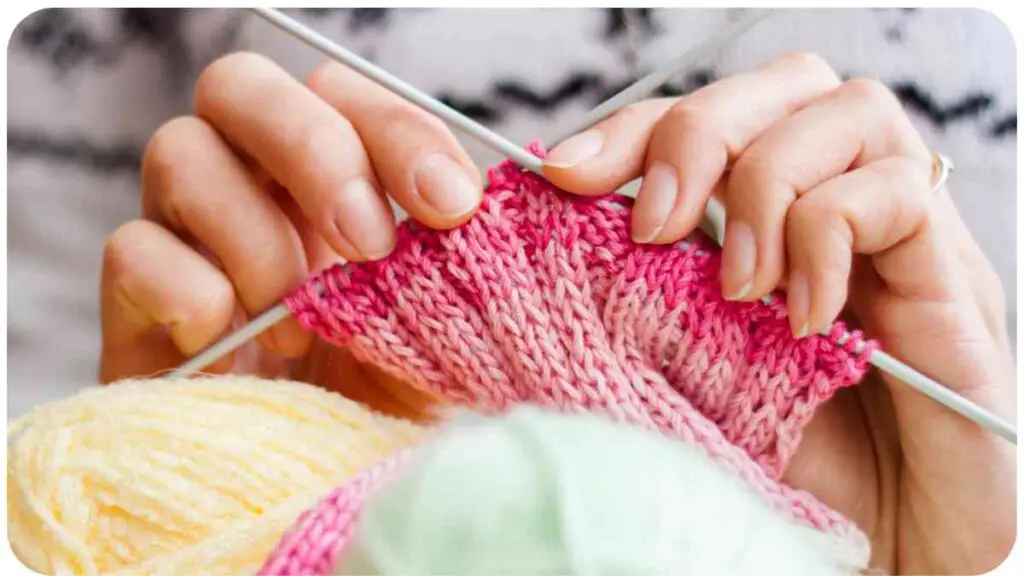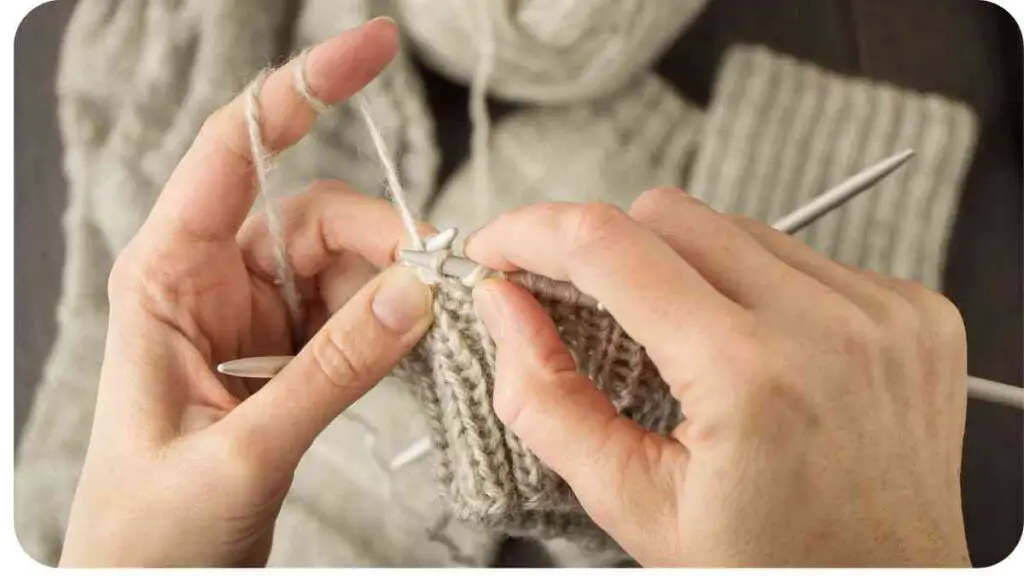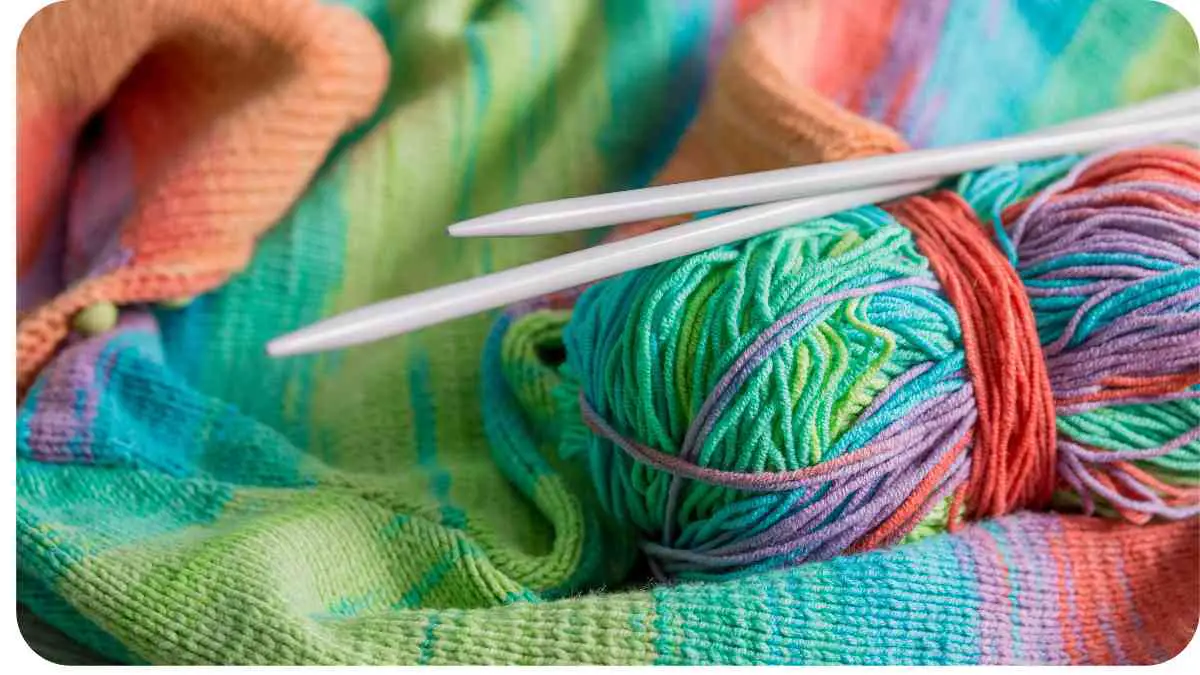Knitting is a beautiful craft that combines creativity, relaxation, and the joy of creating something unique. Whether you’re a seasoned knitter or just starting out, you may wonder what constitutes a normal speed for knitting.
Understanding your knitting pace allows you to set goals, track progress, and make improvements in your knitting speed and efficiency. In this article, we will delve into the concept of knitting speed, explore how to determine your pace, discuss industry standards, provide tips for improvement, address common challenges, and share personal insights to help you on your knitting journey.
| Key Takeaways |
|---|
| Knitting speed varies among individuals, and there is no one-size-fits-all approach to determine a “normal” speed. |
| Factors such as skill level, familiarity with the pattern, yarn and needle choice, and concentration can affect knitting speed. |
| Average knitting speeds range between 40 to 80 stitches per minute, but it’s important to find a comfortable and enjoyable pace for yourself. |
| Techniques like using efficient knitting styles, practicing consistently, and utilizing appropriate knitting tools can help improve speed. |
| Hand fatigue should be avoided by taking regular breaks and doing hand exercises to prevent strain and injury. |
| Maintaining quality craftsmanship while increasing speed requires practice and finding a balance between efficient stitching and proper technique. |
2. What is Knitting Speed?
Definition of Knitting Speed
Knitting speed refers to the rate at which a knitter stitches, measured in stitches per minute (SPM). It signifies the efficiency with which a knitter can complete a project within a given timeframe. While speed may vary from person to person, it serves as a benchmark for evaluating productivity and determining one’s knitting capabilities.
Factors Affecting Knitting Speed

Several factors influence knitting speed. These can include the knitter’s skill level, familiarity with the pattern, complexity of the stitches, type of yarn and needles used, and the knitter’s level of concentration. Additionally, the comfort and ergonomics of the knitting tools, such as the needles and knitting accessories, play a crucial role in a knitter’s speed and overall experience.
| Factors Affecting Knitting Speed |
| Skill level |
| Pattern familiarity |
| Complexity of stitches |
| Type of yarn and needles used |
| Level of concentration |
| Comfort and ergonomics of tools |
3. Understanding Your Knitting Pace
Importance of Knowing Your Knitting Pace

Understanding your knitting pace allows you to set realistic goals and gauge the time required to complete a project. By knowing how fast or slow you knit, you can plan your projects more efficiently, allocate time appropriately, and avoid unnecessary stress. Moreover, it empowers you to improve your speed gradually and witness tangible progress in your knitting journey.
How to Determine Your Knitting Speed
Determining your knitting speed is relatively straightforward. Select a specific knitting project and a comfortable knitting environment. Set a timer for a certain duration (e.g., 10 minutes) and begin knitting. Count the number of stitches you complete during that time. Repeat the process multiple times to obtain accurate results. Divide the total number of stitches by the duration to calculate your average knitting speed.
4. What Constitutes a Normal Knitting Speed?
Varying Knitting Speeds
Knitting speeds can vary greatly among individuals. Some knitters naturally work at a brisk pace, effortlessly completing stitches, while others prefer a more relaxed rhythm. It’s crucial to remember that there is no one-size-fits-all approach when it comes to knitting speed. Each knitter has their unique style and comfort level, and what matters most is finding a pace that allows for enjoyment and quality craftsmanship.
Industry Standards and Average Speeds
While knitting speeds differ, there are industry standards and average speeds that can provide a general benchmark. These standards can vary depending on the type of project, the intricacy of the pattern, and the type of yarn and needles being used. However, as a rough guideline, average knitting speeds range between 40 to 80 stitches per minute.
To illustrate the range of speeds, here is a table showcasing different knitting speeds for various project types:
| Knitting Project | Average Speed (SPM) |
| Sweater | 50-70 |
| Scarf | 60-80 |
| Socks | 70-90 |
| Lace shawl | 30-60 |
| Blanket (simple) | 40-60 |
It’s important to note that these average speeds are not fixed rules but serve as general references. It’s perfectly fine to knit at a slower or faster pace, as long as you are comfortable and satisfied with your progress.
5. Tips to Improve Knitting Speed

Techniques for Faster Knitting
If you wish to enhance your knitting speed, there are various techniques you can incorporate into your practice. One effective method is to minimize unnecessary hand and wrist movements by using efficient knitting styles, such as the Continental or Portuguese style. These styles allow for quicker and smoother stitching, as the yarn is held in the left hand for faster delivery.
Practice and Consistency
As with any skill, practice and consistency are key to improving knitting speed. Set aside regular practice sessions dedicated to working on your speed. Start with shorter projects or specific stitch patterns and gradually increase the complexity as you become more comfortable. By consistently dedicating time to practice, you can train your muscle memory, leading to increased speed and efficiency.
Utilizing Efficient Knitting Tools
The choice of knitting tools can significantly impact your speed. Opt for needles made from materials that facilitate smooth and effortless stitching, such as bamboo or metal. Additionally, using circular needles or interchangeable needle sets can increase productivity, as they allow you to knit larger sections without having to stop and turn your work. Experiment with different yarn weights and types to find those that work well with your knitting style and speed.
Here is a helpful table outlining knitting tools that can enhance your speed:
| Efficient Knitting Tools | Benefits |
| High-quality knitting needles | Smooth, fast, and effortless stitching |
| Circular or interchangeable needles | Continuous knitting without turning work |
| Yarn suited to your knitting style | Improved stitch flow and ease of knitting |
By applying these tips and utilizing efficient knitting tools, you can gradually increase your knitting speed while maintaining quality and enjoyment in your craft.
6. Common Challenges Faced with Knitting Speed
Overcoming Slow Knitting
Many knitters may struggle with slow knitting and aspire to increase their speed. One common challenge is the tension between speed and maintaining consistent stitch quality. It’s crucial to find a balance that allows for efficient stitching without compromising the integrity of your work. Practice, patience, and implementing the techniques mentioned earlier can help you overcome slow knitting and gradually improve your speed.
Dealing with Hand Fatigue
As you strive to knit faster, it’s essential to be mindful of potential hand fatigue. Working at an accelerated pace for an extended period can strain the muscles and joints in your hands and lead to discomfort or injury. Take regular breaks during your knitting sessions, do hand exercises to improve dexterity and flexibility, and listen to your body’s cues to avoid overexertion. It’s always better to knit at a comfortable and sustainable speed rather than pushing yourself beyond your limits.
Maintaining Quality While Speeding Up
Increasing knitting speed does not mean compromising on the quality of your work. It is important to strike a balance between speed and precision. Focus on maintaining consistent tension, even stitching, and proper technique while knitting at a faster pace. Remember, practice makes perfect, and with time and experience, you will be able to knit quickly without sacrificing the high standards you set for your projects.
7. Personal Insights and Anecdotes
My Experience with Knitting Speed
As a professional and experienced knitter, I have encountered my fair share of challenges and successes with knitting speed. When I first started, my pace was relatively slow. However, over time, with consistent practice and exploration of different techniques, I was able to increase my speed without compromising on quality. I found that using circular needles and adapting the Continental knitting style significantly improved my efficiency and allowed me to complete projects more swiftly.
Overcoming Challenges and Increasing Productivity
One key aspect that helped me overcome challenges and increase my productivity was setting goals. By setting achievable targets for each knitting session, I felt motivated and focused. Breaking down larger projects into smaller, manageable tasks helped me stay on track and witness progress along the way. Additionally, seeking inspiration from fellow knitters, attending workshops, and participating in knitting communities provided me with valuable insights and advice to improve my speed and technique.
Conclusion
Understanding your knitting pace is an important aspect of your knitting journey. Knitting speed varies among individuals, and what matters most is finding a pace that suits your style, allows for enjoyment, and ensures quality craftsmanship. While there are industry standards and average speeds to consider, it’s important to remember that everyone’s journey is unique, and progress should be measured by personal growth and satisfaction.
By applying techniques for faster knitting, practicing consistently, and utilizing efficient knitting tools, you can gradually improve your speed and efficiency. Overcoming common challenges such as slow knitting, hand fatigue, and maintaining quality will require patience, practice, and mindful knitting. Remember to always listen to your body, take breaks when needed, and enjoy the process of creating beautiful knitted pieces.
So, embrace your own knitting speed, set achievable goals, and relish the joy of knitting at a pace that brings you fulfillment and satisfaction. Happy knitting!
Further Reading
Here are some additional resources you can explore to delve deeper into the topic of knitting speed:
- Knitting Speed: The Results – Reluctant Knitter: This blog post shares the author’s personal experience and results when it comes to knitting speed. Gain insights and learn from their journey in improving knitting efficiency.
- What’s Considered a Good Knitting Speed? – Reddit r/knitting: This Reddit thread provides a platform for knitters to discuss what they consider a good knitting speed. Gain insights from the knitting community and discover different perspectives on the topic.
- Which is Faster: Knitting or Crocheting? – Craftyolo: This article explores the speed differences between knitting and crocheting, shedding light on the pros and cons of each technique. Gain a deeper understanding of the factors that contribute to the speed of these two popular fiber crafts.
FAQs
Here are some frequently asked questions that can provide additional clarity on the topic:
What factors can affect my knitting speed?
Several factors can influence knitting speed, including skill level, familiarity with the pattern, complexity of stitches, type of yarn and needles used, and the level of concentration.
Is there a specific speed I should aim for while knitting?
There is no specific speed that everyone should aim for while knitting. Knitting speed varies among individuals, and what matters most is finding a pace that suits your style and brings you joy.
Can I increase my knitting speed over time?
Yes, with consistent practice, you can gradually increase your knitting speed. By implementing techniques, using efficient knitting tools, and practicing regularly, you can improve your efficiency and speed.
How can I avoid hand fatigue while knitting at a faster pace?
To avoid hand fatigue, it’s important to take regular breaks, practice hand exercises to improve dexterity and flexibility, and listen to your body’s cues. It’s better to knit at a comfortable and sustainable speed rather than pushing yourself too hard.
Are there any specific knitting styles or techniques that can help increase speed?
Yes, certain knitting styles, such as the Continental or Portuguese style, can help increase speed. These styles allow for efficient and smooth stitching, enabling faster delivery of yarn and stitches. Explore different knitting styles to find what works best for you.

My name is Hellen James, and I’m a crochet and knitting expert. I’ve been crocheting since I was just a kid, but I started taking it seriously when I realized that it was a great way to de-stress and relax. Now that I have kids of my own, I love teaching them how to do it too!

